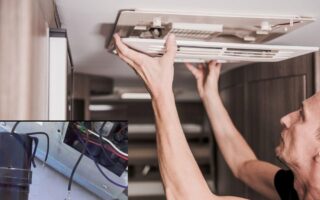When it comes to air conditioning units, understanding the role of drains is essential. Not all AC units are created equal. Some come equipped with a drain system, while others might rely on different methods for managing condensation. The presence of a drain in an AC unit serves a crucial purpose. It helps remove excess moisture that accumulates during the cooling process. This prevents water damage and promotes better air quality by reducing humidity levels. Different types of AC units offer various pros and cons regarding drainage systems. Window units may have less complex designs without dedicated drains, while central air systems usually include extensive drainage options to effectively handle larger volumes of condensation. Maintaining your unit’s drain is vital for optimal performance. Regular cleaning can prevent clogs caused by dust, dirt, or algae buildup. Simple maintenance tasks can go a long way toward ensuring your system runs smoothly throughout the hot months. Be aware of signs indicating issues with your AC unit’s drain, such as water pooling around the unit or unusual sounds during operation. Addressing these problems promptly can save you from more severe complications. Regular maintenance checks enhance efficiency and prolong your system’s lifespan. By being proactive about upkeep, you invest in comfort and reliability when needed.
The purpose of a drain in an AC unit

Air conditioning units are designed to cool indoor spaces while managing humidity. As warm air passes over the evaporator coils, moisture condenses and forms water droplets. This is where the drain comes into play. The primary purpose of a drain is to remove this accumulated condensate. Without a proper drainage system, excess water can lead to various issues like mold growth, leaks, or even damage to your unit’s components. The drain directs this moisture outside or into a designated pan for safe disposal in many designs. This helps maintain optimal performance and ensures that your AC operates efficiently. A well-functioning drain contributes to cooling and improves indoor air quality by reducing humidity levels. Thus, it plays an essential role in both comfort and health within your living space.
Types of AC units with and without drains
Air conditioning units come in various types, some equipped with drains and others without. Central air systems typically have a drain line to remove condensation effectively. This setup is essential for maintaining humidity levels and preventing water damage. In contrast, window units often rely on gravity to manage excess moisture. They may not have a dedicated drain but can overflow if not monitored closely. Portable ACs usually feature built-in reservoirs that collect water. Users must empty these tanks regularly or connect them to a drainage hose for continuous operation. Ductless mini-split systems boast an advanced design, incorporating small drain lines for efficient moisture removal while minimizing energy loss.
Pros and cons of different types of units

When considering air conditioning units, weighing each type’s advantages and disadvantages is crucial. Central AC systems provide comprehensive cooling for larger spaces. They offer a uniform temperature throughout your home but can come with higher installation costs and energy consumption. Ductless mini-splits are versatile. They allow for zone-specific cooling, meaning you only cool areas in use. However, their upfront cost can be steep, and they may require professional installation. Window units are budget-friendly options ideal for single rooms. They’re easy to install but often less efficient than central or ductless systems, leading to potentially higher energy bills over time. Portable air conditioners offer flexibility as they can easily move from room to room.
Maintaining and cleaning an AC unit’s drain
Regular maintenance of your AC unit’s drain is essential for optimal performance. Dust, debris, and algae can accumulate over time, leading to clogs that hinder airflow. Start by turning off the power to your unit. Safety first! Then, locate the drain line; it’s usually a PVC pipe near the indoor air handler. Using a wet/dry vacuum, gently clear out any blockages from the end of the drain line. This quick action can prevent larger issues down the road. Flush the drain with vinegar and water once every few months. This natural solution helps eliminate mold and builds up residue without harsh chemicals.
Signs of a clogged or malfunctioning drain
A clogged or malfunctioning drain can lead to various issues in your AC unit. One of the first signs is water pooling around the indoor unit. If you notice excess moisture, it’s time to investigate. Strange sounds might also be an indicator. Gurgling or bubbling noises often suggest water isn’t flowing properly through the system. Pay attention; these sounds shouldn’t be ignored. If there’s an increase in humidity indoors, it may point to drainage problems. Your air conditioner works hard to maintain air quality and comfort levels; when it’s struggling, so will your environment. Another red flag is frequent cycling on and off. This behavior may indicate that the system is trying to compensate for poor drainage by working harder than necessary.
Importance of regular maintenance for overall efficiency
Regular maintenance of your air conditioning unit is crucial for optimal performance. It helps ensure that all parts function efficiently, reducing the chances of unexpected breakdowns. Clean filters and coils enhance airflow and cooling efficiency. When dirt accumulates, it forces the system to work harder, consuming more energy. A well-maintained unit operates smoothly, leading to lower utility bills. Routine checks also identify potential issues before they escalate into costly repairs. This proactive approach extends the lifespan of your AC unit significantly. Regular maintenance improves indoor air quality by preventing mold and allergens from circulating in your home. An efficient system keeps you comfortable while prioritizing health. Investing time in routine upkeep pays off in comfort and savings. You can enjoy a cool environment with proper care without unnecessary stress on the equipment and your wallet.




